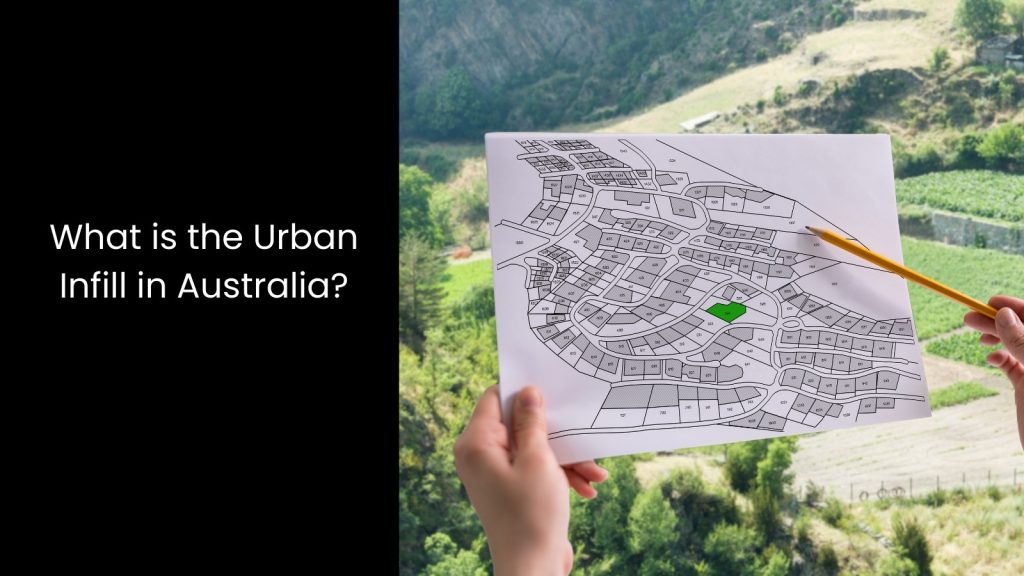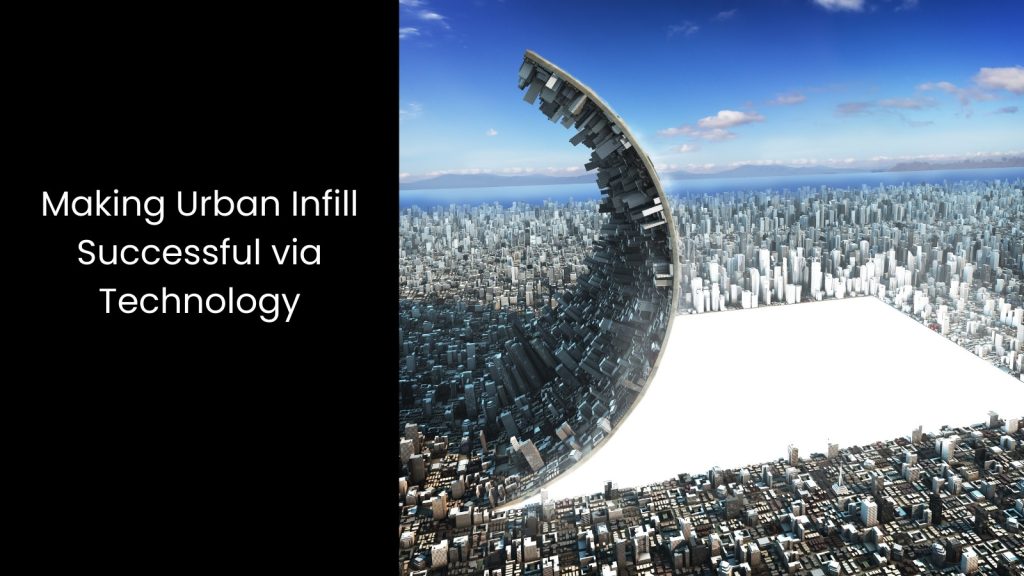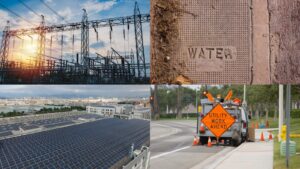Did you know that urban infill could save Australia from expanding its cities by up to 50% in the coming decades? As the country faces rapid urban growth, sprawling outwards is not sustainable. Instead, urban infill offers a smarter, more efficient way to reshape the cities by using existing spaces. In Australia’s diverse landscape, urban infill can unlock incredible opportunities for sustainable development. This is where you need to employ the latest technologies in order to transform underutilised land into connected and eco-friendly communities and smart cities.
This article will reveal how Australia can optimise urban infill to lead sustainable urban growth through cutting-edge technology.
This article will reveal how Australia can optimise urban infill to lead sustainable urban growth through cutting-edge technology.
What is the Urban Infill in Australia?

- The latter refers to the process of developing vacant or underutilised land within existing urban areas rather than expanding outward into rural or undeveloped land.
- This approach to urban growth plays a key role in urban renewal, where old or neglected areas get redeveloped to make better use of space. This is where brownfield development comes into play as a common aspect of urban infill. This is also where previously industrial or commercial sites are cleaned up and transformed into residential or mixed-use spaces.
- As it focuses on density planning, urban infill helps cities accommodate growing populations without contributing to urban sprawl. This means that instead of expanding into greenfields, the process aims to make cities more compact and efficient.
- The best thing is that sustainable development becomes a priority in urban infill projects as developers incorporate eco-friendly building materials, renewable energy solutions, and green spaces into the designs. This approach not only preserves the environment but also creates more livable and efficient urban spaces.
- Moreover, smart cities are another major focus in Australia’s urban infill projects. These cities use technology to improve infrastructure, manage resources more effectively, and enhance the quality of life for residents. For example, smart grids, energy-efficient buildings, and intelligent transport systems are integrated into new developments to create smarter, more sustainable urban environments.
The Latest Technologies to Employ for Urban Infill in Australia

Mixed-Use Zoning Technology Platforms
These platforms help transform urban infill in Australia as they can offer innovative software tools that assist planners and developers in optimising land use. These platforms aid Australian urban planning to move away from typical challenges by allowing better integration of residential, commercial, and green space within infill housing projects.
You may have heard that infill housing usually faces the problem of balancing various land uses while maximising the potential of limited urban spaces. Also, traditional planning approaches can result in inefficient layouts or spaces that do not meet the needs of growing populations. However, mixed-use development, on the other hand, brings different land uses together, such as housing, shops, offices, and parks within the same area. This certainly creates vibrant, diverse communities.
Technology platforms simplify this process by providing accurate data and simulations, helping planners see how different elements can coexist without any problem. These software tools allow planners to analyse zoning regulations, environmental impacts, and infrastructure demands, ensuring that the mix of housing, businesses, and green areas leads to a balanced, sustainable development.
Plus, they help optimise layouts so that cities make the most of their available land while avoiding overcrowding or underuse. Mixed-use zoning platforms also promote efficient transportation planning by mapping out pedestrian-friendly zones and public transport access, which enhances the liveability of urban areas. In this way, these tools make urban infill projects more sustainable and integrated, helping Australian cities grow in ways that meet modern demands. Since they can back up infill housing projects with mixed-use development strategies, Australia can create urban spaces that thrive economically, socially, and environmentally, all while overcoming the challenges.
You may have heard that infill housing usually faces the problem of balancing various land uses while maximising the potential of limited urban spaces. Also, traditional planning approaches can result in inefficient layouts or spaces that do not meet the needs of growing populations. However, mixed-use development, on the other hand, brings different land uses together, such as housing, shops, offices, and parks within the same area. This certainly creates vibrant, diverse communities.
Technology platforms simplify this process by providing accurate data and simulations, helping planners see how different elements can coexist without any problem. These software tools allow planners to analyse zoning regulations, environmental impacts, and infrastructure demands, ensuring that the mix of housing, businesses, and green areas leads to a balanced, sustainable development.
Plus, they help optimise layouts so that cities make the most of their available land while avoiding overcrowding or underuse. Mixed-use zoning platforms also promote efficient transportation planning by mapping out pedestrian-friendly zones and public transport access, which enhances the liveability of urban areas. In this way, these tools make urban infill projects more sustainable and integrated, helping Australian cities grow in ways that meet modern demands. Since they can back up infill housing projects with mixed-use development strategies, Australia can create urban spaces that thrive economically, socially, and environmentally, all while overcoming the challenges.
Digital Twin Technology
This technology creates virtual models of physical spaces, enabling planners and developers to simulate and analyse different aspects of urban development before construction even begins.
One major challenge in urban infill is balancing the need for affordable housing with the desire for sustainable, green building practices. Digital twin technology allows planners to model energy-efficient designs, analyse material choices, and calculate long-term environmental impacts. This will ensure that affordable housing projects also meet high sustainability standards. Just through its ability to visualise how buildings will perform over time, developers can design green buildings that reduce energy consumption and lower operating costs, making them both environmentally friendly and affordable for residents.
Another challenge is heritage conservation, which always complicates urban infill projects. Have you noticed it yet? Many Australian cities have historically significant buildings that require preservation, yet developers need to make the best use of limited space. Digital twin technology helps by creating detailed 3D models of heritage sites, allowing planners to test different development scenarios around these structures without risking damage. It also enables precise simulations to show how new buildings can coexist with older ones.
This ensures that the city’s character is maintained while accommodating growth-keeping green building and affordable housing strategies on one hand!
One major challenge in urban infill is balancing the need for affordable housing with the desire for sustainable, green building practices. Digital twin technology allows planners to model energy-efficient designs, analyse material choices, and calculate long-term environmental impacts. This will ensure that affordable housing projects also meet high sustainability standards. Just through its ability to visualise how buildings will perform over time, developers can design green buildings that reduce energy consumption and lower operating costs, making them both environmentally friendly and affordable for residents.
Another challenge is heritage conservation, which always complicates urban infill projects. Have you noticed it yet? Many Australian cities have historically significant buildings that require preservation, yet developers need to make the best use of limited space. Digital twin technology helps by creating detailed 3D models of heritage sites, allowing planners to test different development scenarios around these structures without risking damage. It also enables precise simulations to show how new buildings can coexist with older ones.
This ensures that the city’s character is maintained while accommodating growth-keeping green building and affordable housing strategies on one hand!
Modular Construction
It provides a practical solution for urban infill in Australia by addressing challenges like urban sprawl, gentrification, and the need for efficient, community-focused development.
Modular construction is building sections of a structure off-site and then assembling them quickly on-site, which significantly reduces construction time and minimises disruption in busy urban areas. This speed is especially useful in transit-oriented development (TOD), where new housing and commercial spaces are built around public transport hubs.
With modular construction, cities in Australia can quickly increase density around these areas, reducing reliance on cars and curbing urban sprawl by encouraging more compact, sustainable growth. One of the key benefits of modular construction is its ability to engage communities throughout the development process. Unlike traditional construction methods that can take months or years to complete, modular projects are quicker and less invasive, making it easier for communities to support new developments. Developers can also involve residents early on by incorporating their input into the design, fostering a sense of ownership and reducing resistance to new buildings, which is often a problem in areas undergoing urban infill.
This approach helps prevent gentrification, where rising property values push out long-term residents, by allowing for the inclusion of affordable housing and community-driven design elements. Modular construction also promotes flexibility in design, enabling developers to create spaces that fit the unique needs of each neighbourhood.
Modular construction is building sections of a structure off-site and then assembling them quickly on-site, which significantly reduces construction time and minimises disruption in busy urban areas. This speed is especially useful in transit-oriented development (TOD), where new housing and commercial spaces are built around public transport hubs.
With modular construction, cities in Australia can quickly increase density around these areas, reducing reliance on cars and curbing urban sprawl by encouraging more compact, sustainable growth. One of the key benefits of modular construction is its ability to engage communities throughout the development process. Unlike traditional construction methods that can take months or years to complete, modular projects are quicker and less invasive, making it easier for communities to support new developments. Developers can also involve residents early on by incorporating their input into the design, fostering a sense of ownership and reducing resistance to new buildings, which is often a problem in areas undergoing urban infill.
This approach helps prevent gentrification, where rising property values push out long-term residents, by allowing for the inclusion of affordable housing and community-driven design elements. Modular construction also promotes flexibility in design, enabling developers to create spaces that fit the unique needs of each neighbourhood.
Smart Building Technologies
These are the newest ‘popular choice’ of urban developers in Australia.
It works wonders in urban infill by using predictive analytics, IoT, sensor networks, and simulation technologies to optimise building performance. These advanced systems help monitor energy use, water consumption, and air quality in real-time, making buildings more efficient and sustainable.
In another way, IoT and sensor networks enable smart buildings to adjust heating, lighting, and ventilation automatically, reducing energy waste and lowering costs. Predictive analytics, driven by data from these systems, allows building managers to identify potential maintenance issues before they become costly problems, ensuring the longevity of the structures. Likewise, simulation technologies help developers plan and design buildings that integrate seamlessly into urban areas, optimising space and resources.
Smart buildings also support infrastructure investment by reducing the strain on city systems such as power grids and water supplies, making urban infill more sustainable.
It works wonders in urban infill by using predictive analytics, IoT, sensor networks, and simulation technologies to optimise building performance. These advanced systems help monitor energy use, water consumption, and air quality in real-time, making buildings more efficient and sustainable.
In another way, IoT and sensor networks enable smart buildings to adjust heating, lighting, and ventilation automatically, reducing energy waste and lowering costs. Predictive analytics, driven by data from these systems, allows building managers to identify potential maintenance issues before they become costly problems, ensuring the longevity of the structures. Likewise, simulation technologies help developers plan and design buildings that integrate seamlessly into urban areas, optimising space and resources.
Smart buildings also support infrastructure investment by reducing the strain on city systems such as power grids and water supplies, making urban infill more sustainable.
Making Urban Infill Successful via Technology

You have to agree that urban infill offers Australia an incredible opportunity to reshape its cities for the better. However, the success rate depends on embracing the right technologies. If you opt for a comprehensive software solution that has every tool you need for a successful urban infill, then you do not just build spaces. Instead, you create smarter, more sustainable communities in Australia. However, collaborating with a reputed partner is a priority!







